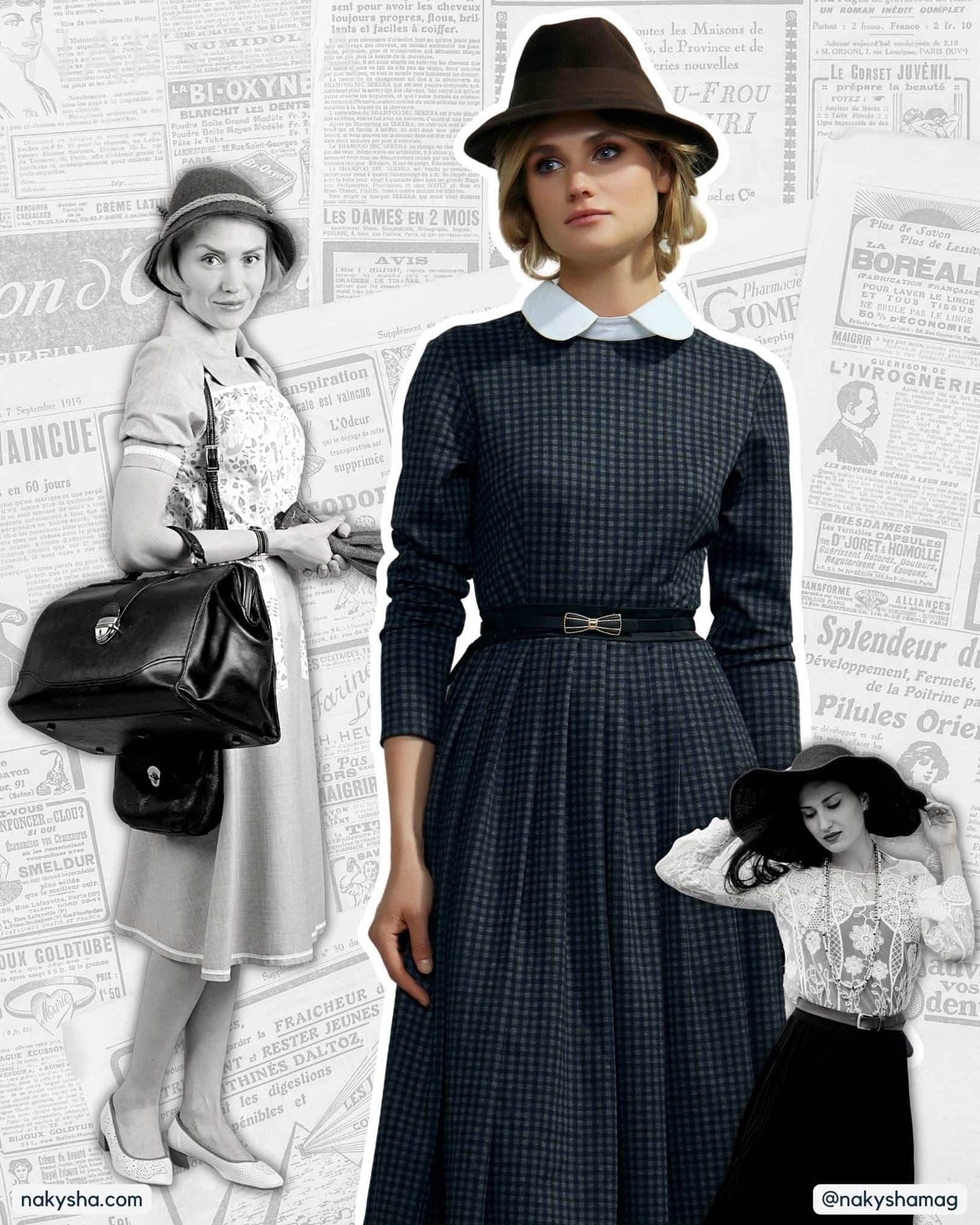The fashion of the past does not vanish. Now and then, a pattern will resurface and persist for a while. We genuinely miss a few trends that have vanished off the radar. Some of these looks may have appeared on the runway occasionally, but they are not officially back.
People studying fashion say that vintage style has existed for at least 20 years. If you love everything vintage, then you’re in for a treat! In this article, we will discuss everything there is to know about vintage fashion.
We will explore the different types of vintage clothing, accessories, and styles that have been popular. We’ll also look at how to shop for vintage items and what to remember when wearing them. From trends to tips and tricks, we’ve got it all covered.
What is Vintage Fashion?
Vintage fashion refers to clothing and accessories that were popular and fashionable during a particular era or period, usually at least 20 years ago. These items are often characterized by their unique styles, quality of craftsmanship, and historical significance.
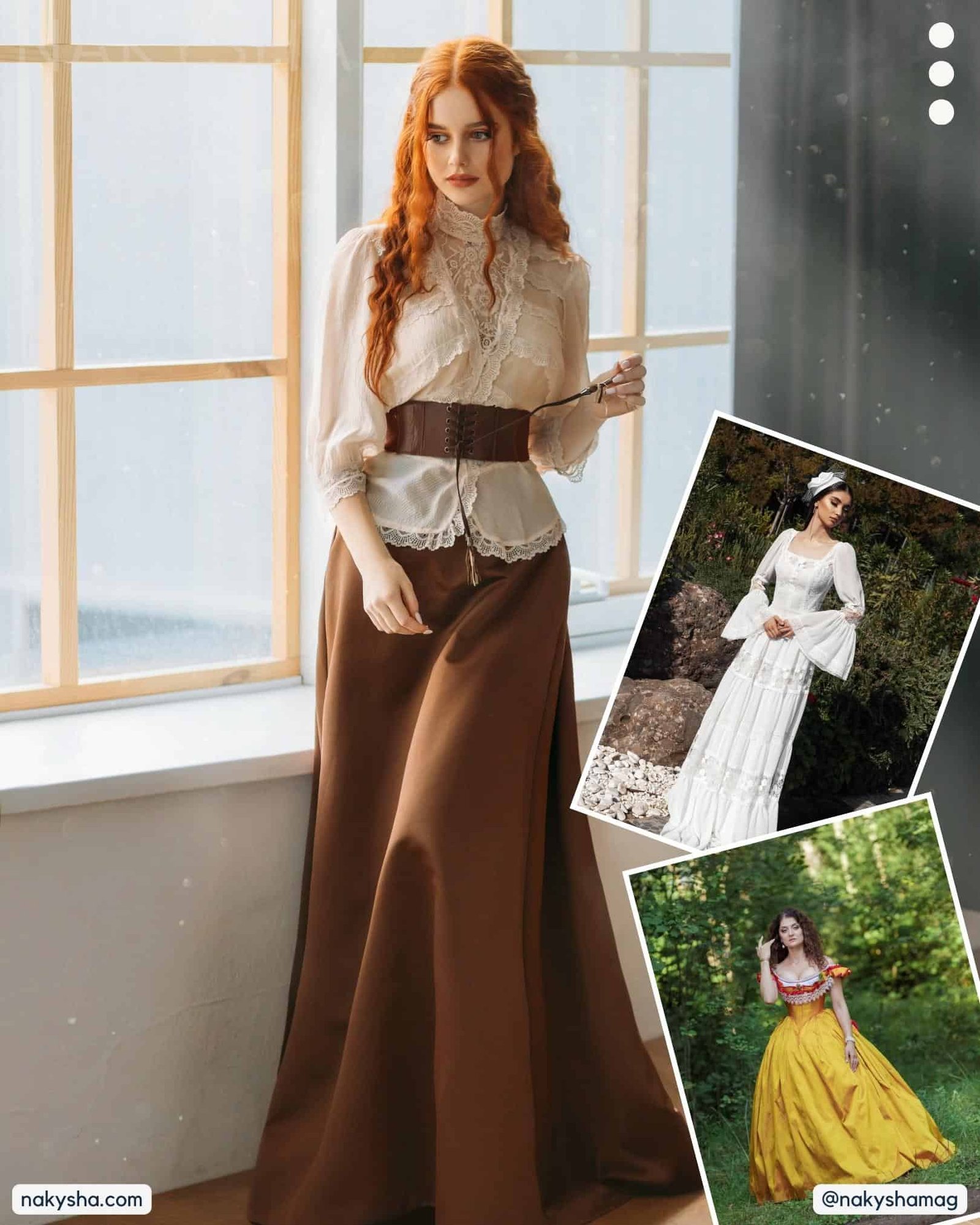
Vintage fashion is typically divided into categories based on the era in which the clothing was produced. For example, clothing from the 1920s is often referred to as “flapper” or “Art Deco” style, while clothing from the 1960s is often associated with the “mod” look.
Vintage fashion can be found in various places, including vintage specialty shops, thrift stores, online marketplaces, family attics, and secondhand stores. Many people collect vintage clothing as a hobby or for fashion purposes, while others may be interested in vintage fashion for historical or cultural reasons.
Wearing vintage clothing is also considered a sustainable fashion choice, as it promotes the reuse and recycling of clothing rather than contributing to producing new clothing.
The Meaning of Vintage Fashion
The meaning of vintage fashion goes beyond just old clothes or styles. It represents a specific era or period in history and the fashion trends that were popular during that time. Vintage fashion is often associated with high-quality craftsmanship and unique designs not commonly found in modern clothing.

Vintage fashion also has cultural significance, as it reflects the social and political climate of the period it was created. For example, the flapper style of the 1920s represented a shift in women’s roles and attitudes toward fashion. In comparison, the countercultural movement and the desire for peace and freedom influenced the hippie style of the 1960s.
Collecting and wearing vintage fashion can be seen as a way to connect with the past and preserve history. It is also a sustainable fashion choice, as it promotes the reuse and recycling of clothing rather than contributing to producing new clothing.
Overall, vintage fashion has a deeper meaning than fashion trends and represents a connection to the past, cultural significance, and sustainability.

Types of Vintage Fashion
Vintage fashion refers to clothing and accessories that are at least 20 years old and have a unique retro style. There are several types of vintage fashion, including:
- Victorian fashion: This style refers to clothing worn during the Victorian era (1837-1901) and is characterized by long, flowing skirts, high necklines, and corsets.
- Edwardian fashion: This style refers to clothing worn during the Edwardian era (1901-1910) and is characterized by a more relaxed silhouette, with skirts that became more narrow towards the hemline.
- Flapper fashion: This style refers to the fashion of the 1920s, characterized by shorter hemlines, looser fitting clothing, and embellishments such as fringe and beading.
- Retro fashion: Retro fashion refers to the fashion of the 1940s and 1950s, which World War II and the post-war era heavily influenced. It includes swing dresses, pencil skirts, and high-waisted pants.
- Mod fashion: This style originated in the 1960s and is characterized by bold colors, geometric shapes, and mini skirts.
- Boho fashion: Boho fashion, short for bohemian, is a style that emerged in the 1960s and 1970s and is characterized by flowing fabrics, floral prints, and accessories such as floppy hats and fringe.
- Punk fashion: This style emerged in the 1970s and is characterized by distressed clothing, leather jackets, and studded accessories.
- Grunge fashion: Grunge fashion emerged in the 1990s and is characterized by oversized clothing, flannel shirts, and combat boots.
What is the Origin of Vintage Fashion?
Vintage fashion refers to popular clothing styles in a particular era or period, typically from the 1920s to the 1980s. The origin of vintage fashion can be traced back to the early 1900s when clothing production shifted from handmade to mass-produced.

During the early 20th century, designers began experimenting with new fabrics, cuts, and styles. This led to various fashion movements, including Art Deco, Flapper, and Hollywood Glamour. Bold colors, intricate detailing, glamour, and sophistication often characterized these styles.
The counterculture movement in the 1960s and 1970s led to a renewed interest in vintage clothing. Hippies and other groups rejected mainstream fashion and instead embraced styles from previous eras, such as the Victorian, Edwardian, and Art Nouveau periods.
Today, vintage fashion remains popular as people seek to incorporate unique, one-of-a-kind pieces into their wardrobes. Vintage clothing can be found in secondhand stores, online marketplaces, and vintage specialty shops. Many fashion designers also incorporate vintage elements into their collections, further cementing the enduring appeal of vintage fashion.
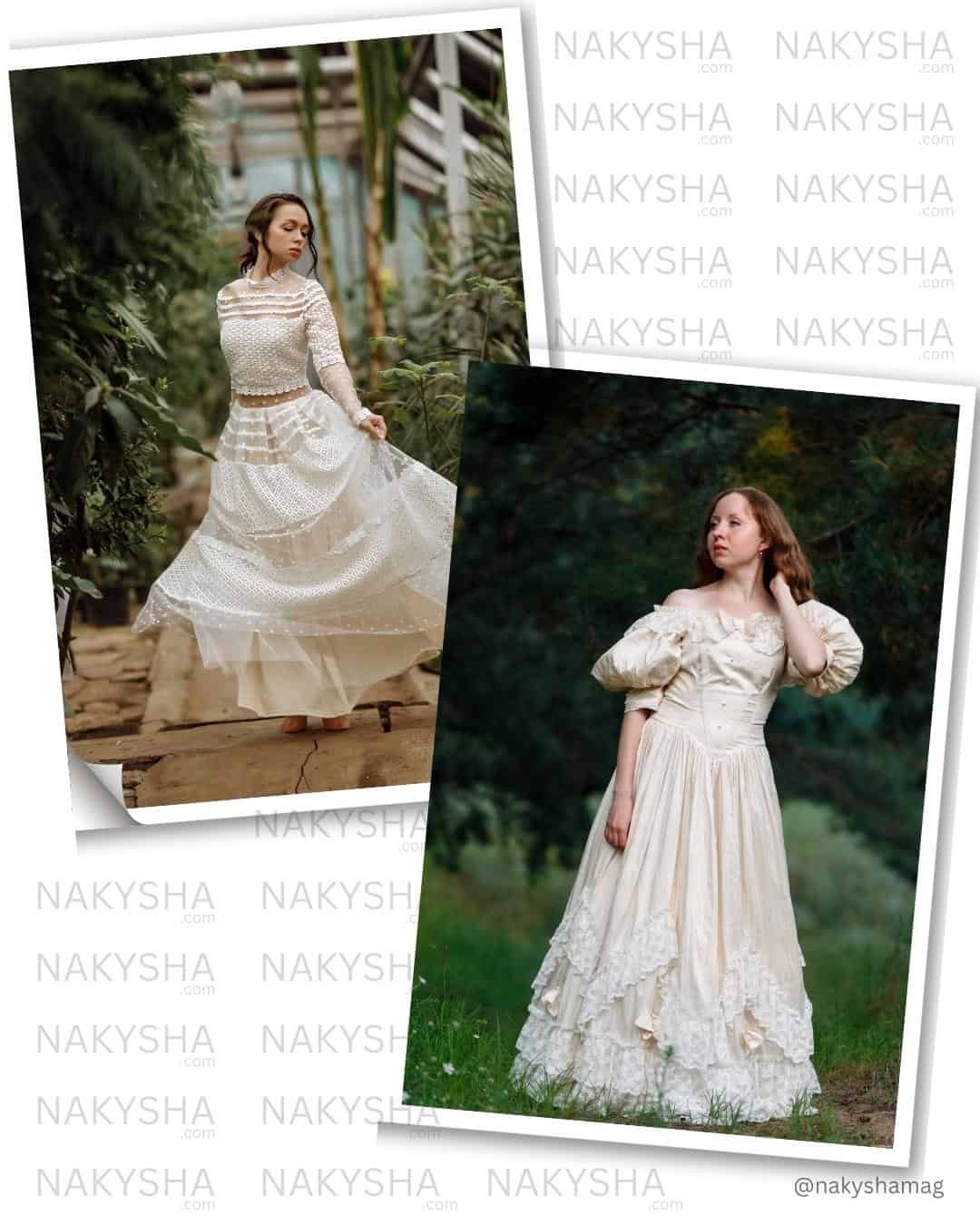
The Sources of Inspiration
Vintage fashion styles draw inspiration from various sources, including:
Historical eras: Clothing from specific historical eras, such as the 1920s, 1950s, or 1970s, often inspires vintage fashion styles. These eras are known for their distinctive fashion trends and are often associated with specific looks, such as flapper dresses, poodle skirts, or hippie styles.
Icons and celebrities: Fashion icons and celebrities of the past, such as Marilyn Monroe, Audrey Hepburn, and James Dean, have also inspired vintage fashion styles. Their signature looks and styles have become timeless classics, and their influence is still seen in fashion today.
Vintage fashion movements: Certain fashion movements, such as the mod and bohemian styles of the 1960s and 1970s, have had a lasting impact on fashion and continue to inspire vintage fashion styles.
Vintage fabrics and prints: The unique fabrics and prints of past eras, such as velvet, silk, and paisley, are often used in vintage fashion styles. These materials and designs have a distinct look and feel not often seen in modern clothing.
Nostalgia: Many people are drawn to vintage fashion styles for the nostalgia factor. Wearing vintage clothing can evoke nostalgia for a period the wearer may not have lived through. It can also be a way to connect with the past and feel a sense of history and tradition.
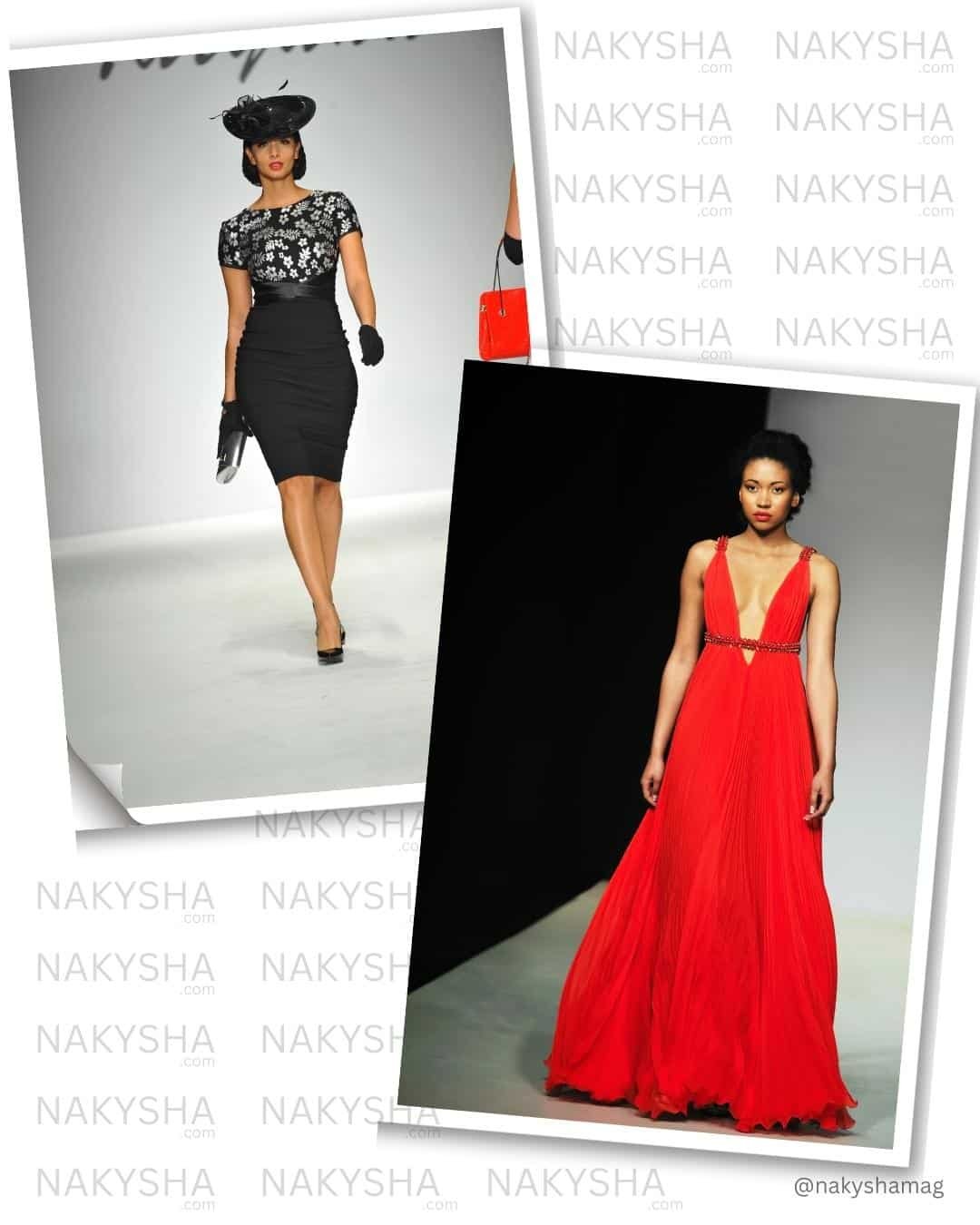
Popular Vintage Fashion Designers
There have been many fashion designers who have made a significant impact on the world of vintage fashion. Some of the most popular and influential vintage fashion designers include:
Coco Chanel – Coco Chanel is known for her elegant and timeless designs, including the iconic little black dress, tweed suits, and quilted handbags.
Christian Dior – Christian Dior pioneered the New Look style, characterized by full skirts, cinched waists, and emphasized hips. He also introduced the A-line silhouette, which remains popular today.
Yves Saint Laurent – Yves Saint Laurent was known for his innovative and daring designs, including the Mondrian dress and Le Smoking tuxedo for women.
Elsa Schiaparelli – Elsa Schiaparelli was known for her bold and whimsical designs, including the famous lobster dress and surrealist-inspired prints.
Halston – Halston was a crucial figure in the disco era of the 1970s, known for his minimalist designs and use of luxurious fabrics such as silk and cashmere.
Mary Quant – Mary Quant was a leading figure in the mod movement of the 1960s, known for her playful and colorful designs, including the mini skirt.
Emilio Pucci – Emilio Pucci was known for his bright and bold prints, often inspired by his Italian heritage and the Mediterranean Sea.
These designers have all left their mark on the fashion world, and their designs continue to inspire vintage fashion trends today.
Why is Vintage Style Still Popular?
All these factors contribute to the enduring popularity of the vintage style, and vintage fashion will likely continue to inspire new trends for years.
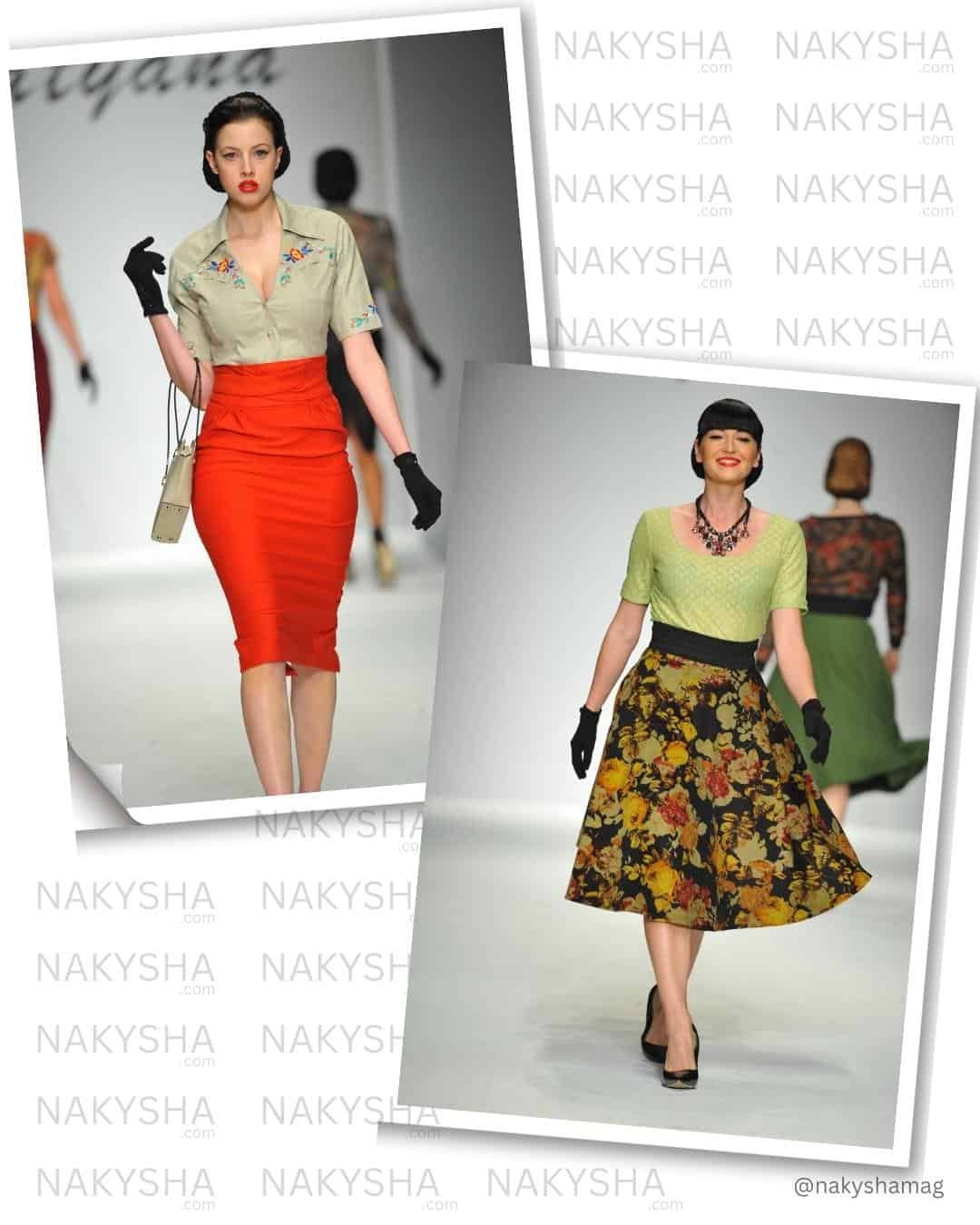
The vintage style remains popular for several reasons:
- Unique and One-of-a-kind: Vintage clothing is often one-of-a-kind or rare, so wearing it allows people to express their individuality and stand out from the crowd.
- Quality and Craftsmanship: Vintage clothing is often made with high-quality materials and superior craftsmanship, which makes it durable and long-lasting. Many people appreciate the attention to detail and quality that went into vintage clothing.
- Sustainability: Wearing vintage clothing is an eco-friendly choice because it reduces the demand for new clothing production and helps to reduce waste.
- Nostalgia: Vintage clothing can evoke nostalgia for a particular era or period, which can be comforting and enjoyable.
- Timeless and Classic: Many vintage styles are timeless and classic, meaning they can be worn in any era and still look fashionable. This makes vintage clothing a wise investment for those who want to build a timeless wardrobe.
- Affordable: In some cases, vintage clothing can be more affordable than new clothing of similar quality. This makes it an excellent choice for those on a budget who still want to look stylish.
The Evolution of Vintage Fashion
Vintage fashion has evolved as different eras have brought new trends and styles. Here are some critical moments in the evolution of vintage fashion:
The 1920s were known for flapper dresses, cloche hats, and bobbed hairstyles. This era marked a shift away from the corsets and restrictive clothing of the past.
The 1930s brought the Great Depression, which had an impact on fashion. Clothing became more straightforward and practical, with muted colors and streamlined silhouettes.

World War II had a significant impact on fashion in the 1940s. Women’s clothing became more practical and utilitarian, with suits and separates replacing dresses. Military-inspired details, such as epaulets and brass buttons, were popular.
The 1950s saw a return to femininity, with full skirts, nipped-in waists, and pointed-toe pumps. This era is often associated with retro Americana, with polka dots, gingham, and saddle shoes being popular.
The 1960s were a time of experimentation, with mod styles, bold prints, and psychedelic colors being popular. Mini skirts and go-go boots were also iconic styles of this era.
The 1970s brought the hippie movement, with bohemian styles, fringe, and tie-dye becoming popular. Platform shoes and bell bottoms were also iconic styles of this era.
Bold colors, power dressing, and the rise of streetwear characterized the 1980s. Shoulder pads, acid-wash denim, and neon colors were all popular.
Today, vintage fashion continues to evolve as designers reinterpret and reimagine styles from the past. Many modern designers draw inspiration from vintage fashion, creating new interpretations of classic styles that continue to captivate and inspire.
What are the Characteristics of Vintage Fashion?
Vintage fashion is characterized by several key features, varying depending on the era and style. Some common characteristics of vintage fashion include:
Unique and unique: Vintage fashion is often one-of-a-kind or rare, making it unique and special. It allows people to express their individuality and stand out from the crowd.
High-quality materials: Vintage clothing is often made with high-quality materials such as silk, wool, and cotton. The materials used in vintage clothing are often more durable and long-lasting than modern fabrics.
Attention to detail: Vintage clothing is often made with superior craftsmanship and attention to the point. This includes hand-sewn seams, delicate embroidery, and intricate beading.
Timeless styles: Many vintage styles are timeless and classic, meaning they can be worn in any era and still look fashionable. This makes vintage clothing a wise investment for those who want to build a timeless wardrobe.
Feminine silhouettes: Many vintage styles are characterized by feminine silhouettes, such as nipped-in waists, full skirts, and hourglass shapes.
Bold prints and patterns: Vintage clothing often features bold prints and patterns, such as polka dots, stripes, and florals.
Nostalgic styles: Many vintage types evoke nostalgia for a particular era or period. Wearing vintage clothing can be a way to connect with the past and appreciate the history of fashion.
Vintage fashion is characterized by its unique, high-quality, and timeless styles that continue to inspire new trends today.
The Colors of Vintage Fashion
The most common colors of vintage fashion vary depending on the era and style. However, some colors that are commonly associated with vintage fashion include:
Black is a classic color popular throughout many eras of vintage fashion. It is a versatile and timeless color worn in various styles.
White is another classic color that has been popular in vintage fashion. It is often associated with summery styles and is an excellent color for vintage dresses, blouses, and skirts.
Red is a bold and vibrant color that has been popular in vintage fashion for many eras. It can add color to any outfit and is often associated with retro styles such as pin-up and rockabilly.
Pastel colors, such as pink, blue, and mint green, were popular in vintage fashion throughout the 1950s and 1960s. These soft, delicate colors are often associated with feminine styles and retro summer fashion.
Earthy colors, such as brown, beige, and olive green, were popular in vintage fashion throughout the 1970s. These muted colors are often associated with bohemian and hippie styles.
Bold prints and patterns, such as polka dots, stripes, and florals, often characterize vintage fashion. These prints can be found in various colors and add a fun and playful element to the vintage style.
Vintage fashion embraces various colors, from classic neutrals to bold and vibrant hues. The colors used in vintage fashion often reflect the style and era of the garment and can be a great way to express individuality and personal style.
How to Dress Vintage Style?
Dressing in vintage fashion can be a fun and stylish way to express your style and stand out. Here are some tips for dressing in vintage fashion:
- Choose your era: Vintage fashion encompasses many different eras and styles, so it’s essential to choose an era that you love and that suits your body type and personal style. Some popular eras include the 1920s, 1950s, and 1970s.
- Invest in vintage pieces: Look for high-quality vintage pieces that are in good condition. You can find vintage clothing and accessories at thrift stores, vintage shops, and online marketplaces.
- Mix and match vintage with modern: You don’t have to dress head-to-toe in vintage to create a vintage-inspired look. Mix vintage pieces with modern clothing to create a unique and eclectic look.
- Pay attention to details: Vintage fashion is all about the details, so pay attention to the small things like accessories, shoes, and hairstyles. Adding vintage-inspired accessories like a scarf or a pair of vintage-inspired shoes can significantly impact your outfit.
- Embrace feminine silhouettes: Many vintage styles are characterized by feminine silhouettes like nipped-in waists and full skirts. These styles can be flattering on many body types and add a touch of elegance to your outfit.
- Don’t be afraid of color and prints: Vintage fashion often features bold colors and prints, so don’t be scared to experiment with these elements. You can start with small touches like a patterned scarf or a brightly colored cardigan and work up to bolder pieces.
- Have fun with it: The most important thing about dressing in vintage fashion is to have fun and express your style. Don’t be afraid to experiment and try new things, and enjoy the process of putting together a vintage-inspired outfit that reflects your unique personality.
Vintage Fashion Outfits
Vintage fashion outfits can vary depending on the era and style. Here are some examples of vintage fashion outfits for inspiration:
1920s Flapper Dress: A 1920s flapper dress is a quintessential vintage piece. Pair it with a long strand of pearls, a feather boa, and a cloche hat for an authentic 1920s look.
1950s Circle Skirt: A circle skirt was popular in the 1950s. Pair it with a fitted blouse, a wide belt, and saddle shoes for a classic 1950s look.
1960s Mod Dress: The 1960s were all about mod fashion, with bold prints and mini dresses. Pair a mod dress with knee-high boots and statement earrings for a retro-inspired look.
1970s Boho Chic: The 1970s were characterized by bohemian and hippie styles. Pair a flowy maxi dress with a denim jacket, a floppy hat, and fringe boots for a boho-chic look.
1980s Power Suit: The 1980s were all about power dressing, with shoulder pads and bold colors. Pair a blazer with high-waisted pants and pumps for a retro power-suit look.
Retro Swimwear: Retro-inspired swimwear, such as a high-waisted bikini or a one-piece with ruching, can add a vintage touch to your beach or pool day.
These are just a few examples of vintage fashion outfits. The possibilities are endless, and you can mix and match different vintage pieces to create a unique and personalized vintage look.
Vintage Fashion Makeups
Vintage fashion makeup can add a retro-inspired touch to any outfit. Here are some tips for creating a vintage fashion makeup look:
Determine the Era: Different eras had different makeup styles, so determine which period you want to emulate before starting your makeup. For example, 1920s makeup was characterized by a pale complexion, dark lipstick, and bold eye makeup, while 1950s makeup featured a brighter, more youthful look with red lips and a cat-eye eyeliner.
Start with a Flawless Base: Vintage fashion makeup often featured a flawless, matte complexion. Use a full-coverage foundation and powder to achieve a smooth, even finish.
Define Your Eyes: Eyeliner was a staple of vintage fashion makeup. For a 1950s-inspired look, create a cat-eye with liquid eyeliner. For a 1920s-inspired look, use a smoky eye technique with dark eyeshadow and liner.
Add Bold Lips: Bold lips were also a popular element of vintage fashion makeup. Choose a bold lipstick shade, such as red or dark plum, and apply it with a lip brush for precise application.
Embrace Blush: Blush was often used to add a natural, rosy glow to the cheeks. Choose a matte blush in a pink or peach shade and apply it to the apples of the cheeks.
Finish with Vintage-Inspired Details: Vintage fashion makeup often featured small details, such as perfectly groomed eyebrows or a beauty mark. Consider adding these details to your makeup look for an extra touch of authenticity.
Remember to have fun and experiment with different vintage makeup styles to find the one that works best for you.
Vintage Fashion Hairstyles
Vintage fashion hairstyles can complete the overall retro-inspired look. Here are some tips for creating vintage hairstyles:
Use Vintage Hair Accessories: Vintage hair accessories, such as hair combs, barrettes, and headbands, can add a vintage touch to any hairstyle. Choose accessories that are appropriate for the era you want to emulate.
Experiment with Pin Curls: Pin curls were a popular technique for creating vintage curls. Use bobby pins to create small curls and set them with hairspray or gel. Leave them in for a few hours or overnight, then remove the pins and brush out the curls for a voluminous vintage look.
Try Victory Rolls: Victory rolls were a popular hairstyle in the 1940s and 1950s. To create them, section off a portion of hair, roll it towards the scalp and secure it with bobby pins. Repeat on the other side for a symmetrical look.
Consider a Vintage Updo: Updos were popular in the 1950s and 1960s. Try a bouffant or beehive updo for a retro-inspired look.
Add Vintage-Inspired Waves: Soft, loose waves were famous in the 1930s and 1940s. Use a curling iron or hot rollers to create loose waves, then brush them out for a vintage-inspired look.
Remember to have fun and experiment with different vintage hairstyles to find the one that works best for you and your outfit. You can create the perfect vintage-inspired look for any occasion with some practice.
Vintage Fashion Accessories
Vintage fashion accessories can add a unique and authentic touch to your outfit, so don’t be afraid to experiment with different styles and combinations to find the ones that work best for you.
Vintage fashion accessories can add a finishing touch to any retro-inspired outfit. Here are some of the most popular vintage fashion accessories:
- Hats: Hats were essential to vintage fashion, and styles varied by era. For example, cloche hats were popular in the 1920s, while wide-brimmed hats were popular in the 1950s.
- Jewelry: Jewelry was often bold and statement-making in vintage fashion. Popular styles included pearl necklaces, brooches, and large earrings.
- Scarves: Scarves were a versatile accessory in vintage fashion and could be worn in various ways, such as tied around the neck or worn as a headband.
- Gloves: Gloves were often worn as a finishing touch to a vintage outfit. Styles included short gloves for daywear and long gloves for formal occasions.
- Handbags: Handbags, such as the boxy clutch or the structured top-handle bag, were often small and structured in vintage fashion.
- Sunglasses: Vintage sunglasses often had unique shapes and frames, such as cat-eye or round edges.
- Belts: Belts were often used to cinch in the waist and create a defined silhouette. Wide or skinny straps were popular, depending on the era.

